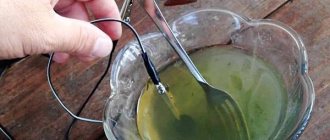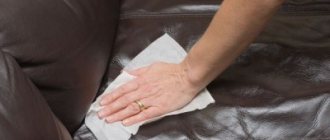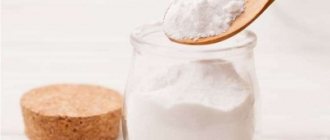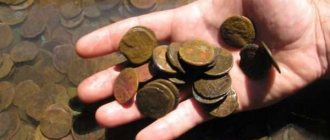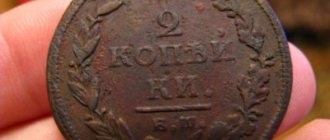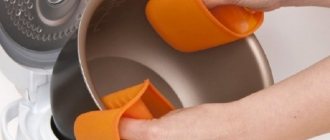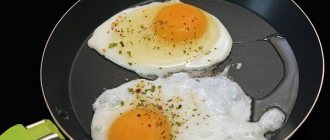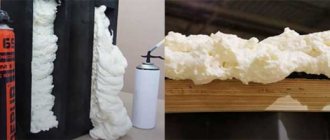Causes of plaque on copper
Copper coins can become dull and develop a coating that completely hides the engraving. They usually take on a dark amber color. This occurs as a result of metal oxidation under the influence of air and moisture. In addition, copper, due to its structure, is considered not a very stable material.
Such a coating is usually called patina. It can be natural or artificial. The first type of patina is caused by the age and wear of the coin and its frequent use. In the world of numismatics, it is believed that the natural patina imparts special beauty and allows one to trace the history of a banknote.
Copper coins
Under the influence of an acidic environment, copper can acquire other shades. Green specimens indicate contact with sea water. Coins that have been in contact with the ground for a long time acquire a brown tint. A yellow coating indicates contact with lead objects. Therefore, the main criterion affecting the condition of a coin is the conditions of its storage.
Most of the copper money from the era of Tsarist Russia is in poor condition due to the cataclysms that the country has undergone over the past century. Some coins still remain in the ground, where no one has yet found them.
Causes of pollution
The reason for the appearance of a green coating on old coins is oxidation. Over time, the surface of metal banknotes becomes covered with copper carbonate salts and acquires a green color of different shades. Before you start cleaning a coin, you need to clearly understand what metal it is minted from, and based on this, determine the cleaning method.
Sometimes on the surface of metal money, the so-called brilliant green appears as green spots of copper chloride, which become larger over time and can completely destroy the coin. Not only the most ancient metal money can turn green, but also relatively new ones, minted from low-grade silver, an alloy of copper and nickel, bronze or copper.
But not every green stain represents chlorine disease; it may be an area of noble patina, and it is better not to remove it. Therefore, the numismatist needs to conduct special testing to determine the need to remove the green deposits.
Preparing for cleaning
Before cleaning, it is recommended to first boil the coins in an enamel bowl. It is important to dry the products thoroughly and make sure there is no moisture on them. To do this, lay them out on a dry napkin or paper towel. Before cleaning, it is better to test the selected product on other copper objects.
Strong chemical or mechanical effects can damage the surface, so all manipulations must be carried out carefully, making sure that your actions are correct. It is worth entrusting the cleaning of very rare and expensive coins to professionals. In other cases, you can safely remove plaque using improvised means.
Electrolysis
Cleaning copper by electrolysis is only possible when the coin is not severely damaged and the oxides have not corroded deep cavities in the coin. This requirement is due to the fact that when cleaning by electrolysis, all imperfections will appear very clearly on the coin.
| Two kopecks from 1924 were purified by electrolysis. A solution of baking soda was used as an electrolyte, and a charger for a car battery (12V, 2A) was used as a current source. Cleaning time 5 minutes. |
Electrolysis cleaning technology is that a coin is attached to the “-” (cathode) of a direct current source, or a graphite element or any object made of the same material as the coin itself is attached to the “” (anode). Next, the anode and cathode are immersed in the electrolyte and current is applied. As an electrolyte, you can use a solution of baking soda in water (2 tablespoons per liter). The cleaning process takes from several minutes to an hour depending on the size of the coin, its condition and the power of the current source.
Types of funds
There are special means and tools for cleaning copper coins:
- Folk. These are harmless compounds, which include lemon, vinegar, salt, toothpaste, etc. They are always at hand and remove plaque well.
- Chemical. Such tools save time and give good results.
- Mechanical impact. The cleaning process may require a needle, a cotton swab, a soft cloth, a brush, cutters, gloves, and tweezers. They allow you to remove dirt even in hard-to-reach places.
These products will help cope with moderate to mild plaque.
Ammonia
Vinegar-salt method to clean coins
USSR coins made of copper-nickel alloy can be cleaned with a vinegar-salt solution. This method consists of several stages:
- Take a small container, pour 100 ml of vinegar into it and add 1 tbsp. spoon of salt. Stir.
- Immerse the money, previously washed with soap, into the solution so that it is completely covered.
- Next, you will be able to see the chemical reaction - the surface will begin to turn white, and its contents will become more clearly visible.
- After 10–15 minutes, you can remove the coin with tweezers, after which you carefully clean it with an eraser. If necessary, repeat the entire procedure from the beginning.
Do not heat the vinegar-salt solution under any circumstances, otherwise the coins will be completely damaged.
After cleaning with vinegar, the patina may be damaged, cavities and other uneven parts may open, you should be especially careful.
Various cleaning methods
Purification of metal money is carried out in various ways. Some of the products used are universal and suitable for many alloys. But there are compositions that are used only for certain metals. Therefore, you need to be more careful when choosing a product.
Mix of soda and soap
A safe cleaning method using baking soda and soap will ensure that your coins are clean in no time. The only thing is that you will have to spend some time getting the copies in order.
Soap (laundry or baby soap) is grated and poured with hot water. After an hour or two, the solution will thicken and acquire a paste-like consistency. Next, one coin at a time is immersed in the composition so that all are completely covered with soap.
It is necessary to keep the products in a soap solution for 1–7 days. Then they are taken out and washed under water, removing dirt with a toothbrush. To completely clean the coins, the procedure is repeated up to four times.
After removing heavy plaque, carefully clean the product with a toothbrush and soda. Sodium carbonate will remove the white residue that remains from soap.
Ammonia
To eliminate copper oxides, an ammonia solution, called ammonia, is suitable. It is poured into a plastic container and coins are placed in it. They should be turned over periodically without removing them from the composition. Then water is gradually added to the ammonia to reduce the ammonia concentration. When the solution becomes very weak, the coins are taken out and washed under clean water.
Toothpaste
Abrasive toothpastes are not suitable for cleaning coins; they can severely scratch the surface. For the procedure, it is better to choose a composition without particles and a soft toothbrush. Copper money is cleaned with a paste and a brush, and then rinsed well with water. This method is best used to remove stains from inexpensive items.
Acetic and citric acid
For coins that are not particularly valuable, you can use a vinegar solution. This must be done carefully, because it can change the color of the product and damage the surface. Coins are placed in 10% acetic acid for 24 hours, and then washed and dried .
You can use vinegar in combination with salt. To do this, take 50 ml of acid and add 5 g of salt. Money is placed in the resulting solution away from each other. After five minutes, the products are treated with a soft brush and washed with running water.
To clean with citric acid, use plastic or ceramic dishes. Warm water is poured into it and the acid crystals are dissolved. The product is prepared in the ratio: 3 parts water to 1 part powder. The money is immersed in water and dirt is removed with a cotton swab, then it is washed and dried. If necessary, the procedure is repeated after some time.
Salt
Salt
For this method, take a small piece of foil and prepare a slurry on it from water and salt in a ratio of 2 to 1. The object to be cleaned is placed in the composition and wrapped in foil for 6–8 hours. The procedure must be carried out very carefully, without pressing on the coin. After the specified time, the product is taken out and washed with water.
Coca Cola
The famous drink has long been known for its cleansing properties. To make the coins shine again, pour a little Coca-Cola into the container and immerse them in the drink. After seven days, the items are taken out, washed and laid out on a towel to dry.
Method with oil
This method involves boiling coins in an oil mixture. Vaseline oil is best, but vegetable oil can also be used. It is poured into a container and put on fire. When the oil boils, place coins on the bottom of the pan. They are kept in boiling oil until the stains disappear, then remove the pan from the heat and cool. The products are washed under water with a brush.
Electrolysis method
The effectiveness of this method will be ensured if safety precautions are observed. It is better to test the method on inexpensive coins to avoid damage to valuable coins.
Products are restored using a power supply or a regular universal phone charger. For cleansing you will also need:
- metal object (not copper);
- clothespins or clips;
- glass or ceramic container.
It is necessary to prepare a saline solution: 1 large spoon of salt per 1 liter of liquid. Then the following manipulations are performed:
- Attach one clip with a “-” sign to a coin, and one with a “+” sign to a metal object.
- Plug the power supply into the outlet.
- A coin and a metal object are dipped into a container of saline solution.
- Soon the composition will become cloudy due to the dissolution of oxides and dirt. Usually 20–30 minutes is enough.
- Finally, the coin is washed with hot water and dried.
The procedure is carried out with an open window in a bright room. The body should be protected with long sleeves and rubber gloves should be worn on hands.
The power of the power supply should not exceed 12 V. The entire cleaning process should be controlled; you cannot simply plug in the device and leave.
Correct execution of the procedure will allow you to achieve the desired results - rid your money of patina and oxides. At the same time, they will not lose their value and quality.
Cleaning with Shine Coins
Special fluids
Today, metal cleaning fluids are available in stores. They are very easy to use. You need to immerse the copper coins in the solution for about 15 minutes and then rinse them in clean water.
Professional formulations do not contain aggressive chemical compounds and can even cope with old dirt and oxides. The likelihood of damage to the coin is minimal. Such funds include “Universal B”, “Shine Coins”.
How to return noble patina to copper
Many methods of cleaning coins, along with oxides and dirt, also remove the natural patina, which is so highly valued by numismatists. In order to artificially recreate it, you will need sulfur ointment. It can be purchased at a pharmacy.
The left side has patina, the right side is cleared of it.
Sequencing:
- pour warm water into a small basin or bowl;
- put on rubber gloves;
- apply and rub sulfur ointment into the coin, this should be done with your hands under water;
- try to distribute the ointment evenly over the product;
- as soon as the metal begins to darken, the product must be removed and wiped with a paper towel;
- leave the coin for two days to consolidate the effect;
- After that, lubricate with Vaseline and polish with a felt cloth.
The desired effect is achieved in several doses, with an interval of two months. It should be remembered that artificial patina is easily washed off with a product containing acid.
Cleaning coins of various alloys
Removing plaque from ancient coins at home is quite simple, but professionals advise not to take risks and seek help from experienced specialists. Before choosing a cleaning method for your collection, it is important to determine the metal from which the numismatic items are made.
Copper coins
It is not at all necessary to buy expensive liquids to clean copper coins; you can use traditional methods. Judging by the reviews, the most popular methods are boiling in oil and electrolysis.
It is important to remember that in attempts to restore the shine of a coin, you can ruin its condition and thereby reduce its market value. Some collectors do not at all deprive their specimens of the noble patina that emphasizes their antiquity.
Cupro-nickel coins
Nickel coins remain virtually unchanged after exposure to the environment. Most specimens, except for this element, contain copper and require cleaning. All of the methods listed above are suitable for removing plaque from copper-nickel coins.
Bronze, silver and gold coins
An effective at-home cleaning method for bronze antique coins is a vinegar-salt solution. To remove plaque from them, pour 100 ml of vinegar into a bowl and dissolve 1 large spoon of salt in it. The products are dipped into the composition, and within a few minutes their surface will become a natural color. Anyone who decides to use ammonia should take into account that ammonia hydrate changes the color of bronze to black or brown. They should be used only in extreme cases.
Gold is an inert metal that cannot oxidize or rust. It doesn't need cleaning. The maximum that can be done is to wash the gold coins in a soapy solution. It is not recommended to use hard brushes or abrasives to avoid scratches on expensive products.
The method of purifying silver money depends on the grade of the metal. Do not use mechanical cleaning or abrasives to remove plaque. High-grade silver can be cleaned with ammonia, while low-grade silver can be cleaned with Trilon B. Like any other coins, silver and gold items should be thoroughly dried after cleaning.
Iron-zinc coins
Cleaning zinc coins is not easy and requires care and attention. It is not recommended to wash them with alkali or acid. Reinigungsbad is the best solution.
For the greatest effect, you can use a solution of hydrochloric acid. To do this, place iron-zinc coins in a 1% solution and take them out every 3-5 seconds to inspect. If you miss the moment, the acid will begin to dissolve the coin itself. For this procedure it is better to use tweezers and rubber gloves. After acid cleaning, it is necessary to rinse the products under running clean water.
Cleaning iron coins is similar to removing plaque from zinc items. It is worth considering that iron does not react so quickly with acid.
Applying patina to the coin
To keep a copper coin presentable, it is important to apply a patina that will protect it from external influences.
- Light a fire (you can use gas, but a fire is better) and pour water into a pan that you don’t mind. Add 50 grams of copper sulfate and 5 potassium permanganate to it for every liter of water.
- When the water reaches a boil, extinguish the fire and put the coins in the pan, stirring constantly. Observe the color of copper objects, it should change.
- When the color changes, take out the coins and lay them out to dry.
- Preserve the patina using a solution of benzene and alcohol in a 1:1 ratio.
- Wipe with vegetable oil.
What should you not use or do when cleaning?
Often, novice collectors use crude methods for cleaning coins. This provokes smoothing of parts, loss of natural roughness, and the formation of recesses from the removal of oxides. Before you begin removing plaque from antique coins at home, you should read the following rules:
- Do not use compounds with large particles; they may leave scratches.
- It is not recommended to clean copper money with concentrated acids.
- It is not allowed to scratch the product with a needle or blade to remove contamination.
- Do not use grinding and polishing pastes (GOI pastes).
- Before drying coins under a lamp, you need to make sure that not hard water was used for rinsing, otherwise traces of plaque may remain on the coins.
- No need to clean coins unnecessarily. Simply wash them in soap and water and dry immediately.
It is important to understand that for some pieces, patina is considered a natural decoration that enhances its value.
What is prohibited from cleaning coins?
Do not use abrasive powders or rough tools to remove greenery from coins. Such impacts, and even with inept hands, can leave marks on the coin and damage the noble patina.
It is forbidden to use corrosive household chemicals, sandpaper, or rough metal brushes for cleaning.
You should not use very concentrated hydrochloric, nitric, acetic and sulfuric acids - their use can irreversibly damage the design of metal money.
Do not use a composition with ferric chloride to clean coins - this is a salt that is used to etch circuit boards, and it can corrode copper.
Coppers should not be exposed to high temperatures - this can cause the metal to begin to melt, which will damage its structure.
How to store copper coins at home?
Numismatics is considered a fairly common and popular hobby. Today there are many packages on sale that are designed to store coins. A regular album will do as well. The main thing is that it does not contain polyvinyl chloride, otherwise the collection may deteriorate. There are other rules that every numismatist should know about:
- It is better to handle coins with gloves or tweezers, otherwise fingerprints may remain.
- It is not recommended to store the album in new furniture, otherwise the varnish may ruin the collection due to toxic fumes.
- Special plastic tubes are best suited for storing coins. They have no effect on copper.
- Some collectors wax or varnish specimens before storing them. However, this method can cause negative contact of the substance with the metal. It is acceptable to use chalk powder for rubbing.
- Many numismatists prefer to store each coin in a separate paper envelope.
- Specimens should be kept in a clean and dry place that is free from dust and moisture.
Thus, the safest and most effective method, suitable for various coins, is a soap solution. Often it is enough to remove dirty stains. The main thing is to dry the coins well before putting them in the album.
Cleaning with Trilon-B
Trilon-B (ethylenediaminetetraacetic acid disodium salt) is a special cleaning agent designed to make most insoluble metal salts soluble. Thus, oxides and patina are easily washed off from the surface of the coin in a Trilon-B solution. Trilon-B cleans coins coated with uniform oxides well. But if the oxides on the coin have a different structure, then as a result of cleaning on some surfaces the coin is cleaned to a shine, while on others the oxides continue to persist, in this case it is necessary to resort to artificial patination after cleaning.
The main advantages of cleaning with Trilon are:
- trilon does not destroy the metal of the coin, as acids and alkalis can do;
- high cleaning speed - cleaning a copper coin takes a few minutes, in severe cases a couple of hours.
| Two kopecks of 1841 had fairly uniform oxides, which were easily cleaned off with Trilon. But the 1836 penny was covered with oxides of varying densities, and when cleaning, the oxides were removed quickly from part of the coin, and slowly from the other part. Thus, part of the penny coin has acquired a copper metallic sheen and requires patina. |

